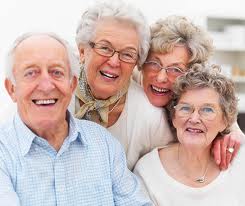

Dreams and dreaming among the elderly
In a 1999 paper entitled "Dreams and Dreaming Among the Elderly: An Overview" we looked into what was then known about the dreams of those in the later phases of life. This was in connection with a project in which we wished to investigate the effects of dream-telling among the elderly. The hope was to show that dream-telling (without interpretation) had beneficial effects and that this could then be used in an effort to introduce nurses and other health care professionals to the idea of asking for dreams from their patients as a way of making those in their care feel more at home and establish a better and more human contact. Unfortunately, in our research study (supported by the Swiss National Science Foundation) we ran into what is known as a ceiling effect: those that volunteered to serve as subjects were too well off -- there was hardly any room for improvement (we had to have healthy volunteers as subjects because we had to be sure they were not taking psychoactive medicines.)!
Previous section Next section List of sections List of chapters